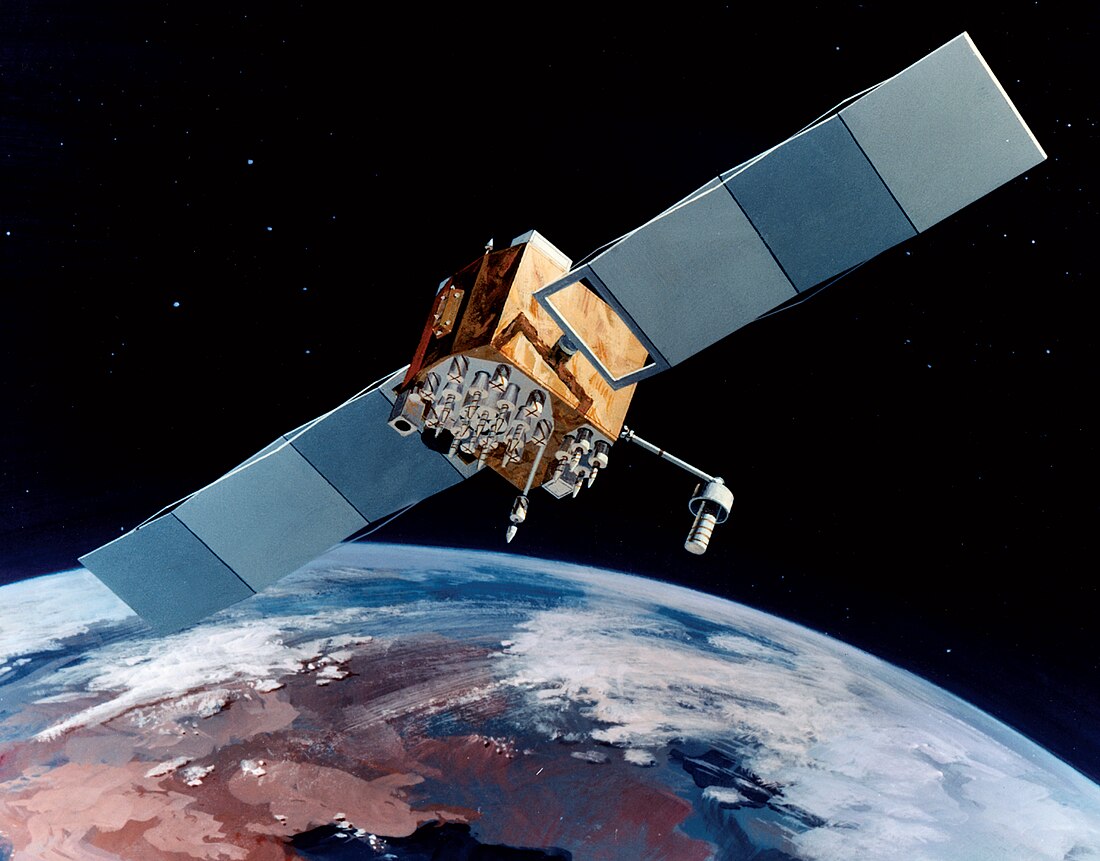Top Qs
Timeline
Chat
Perspective
GPS Block IIF
Operational generation of GPS satellites From Wikipedia, the free encyclopedia
Remove ads
GPS Block IIF, or GPS IIF is an interim class of GPS (satellite) which were used to bridge the gap between previous Navstar Global Positioning System generations until the GPS Block III satellites became operational. They were built by Boeing, operated by the United States Air Force, and launched by the United Launch Alliance (ULA) using Evolved Expendable Launch Vehicles (EELV).[2] They are the final component of the Block II GPS constellation to be launched. On 5 February 2016, the final Block IIF satellite was successfully launched, completing the series.
Remove ads
The spacecraft have a mass of 1,633 kg (3,600 lb) and a design life of 12 years. Like earlier GPS satellites, Block IIF spacecraft operate in semi-synchronous medium Earth orbits, with an altitude of approximately 20,460 km (12,710 mi), and an orbital period of twelve hours.
The satellites supplement and partially replace the GPS Block IIA satellites that were launched between 1990 and 1997 with a design life of 7.5 years.[3] The final satellite of the Block IIA series was decommissioned on 09 October 2019.[4] The operational constellation now includes Block IIR, IIRM, IIF and III variants.
Because the Evolved Expendable Launch Vehicles are more powerful than the Delta II, which was used to orbit earlier Block II GPS satellites, they can place the satellites directly into their operational orbits. As a result, Block IIF satellites do not carry apogee kick motors. The original contract for Block IIF, signed in 1996, called for 33 spacecraft. This was later reduced to 12, and program delays and technical problems pushed the first launch from 2006 to 2010.[5]
Remove ads
New characteristics
- Broadcasting L5 "safety of life" navigation signal demonstrated on USA-203[3]
- Broadcasting a new M-code signal [3]
- Doubling in the predicted accuracy [6]
- Better resistance to jamming[3]
- Reprogrammable processors that can receive software uploads [3]
- The first GPS satellites not to have Selective Availability (SA) hardware installed, which degraded civilian accuracy when turned on in the original satellite fleet [3]
Remove ads
Launch history
Summarize
Perspective
Overall, 12 GPS Block IIF satellites were launched, all of which are currently operational:
Remove ads
See also
References
Wikiwand - on
Seamless Wikipedia browsing. On steroids.
Remove ads

